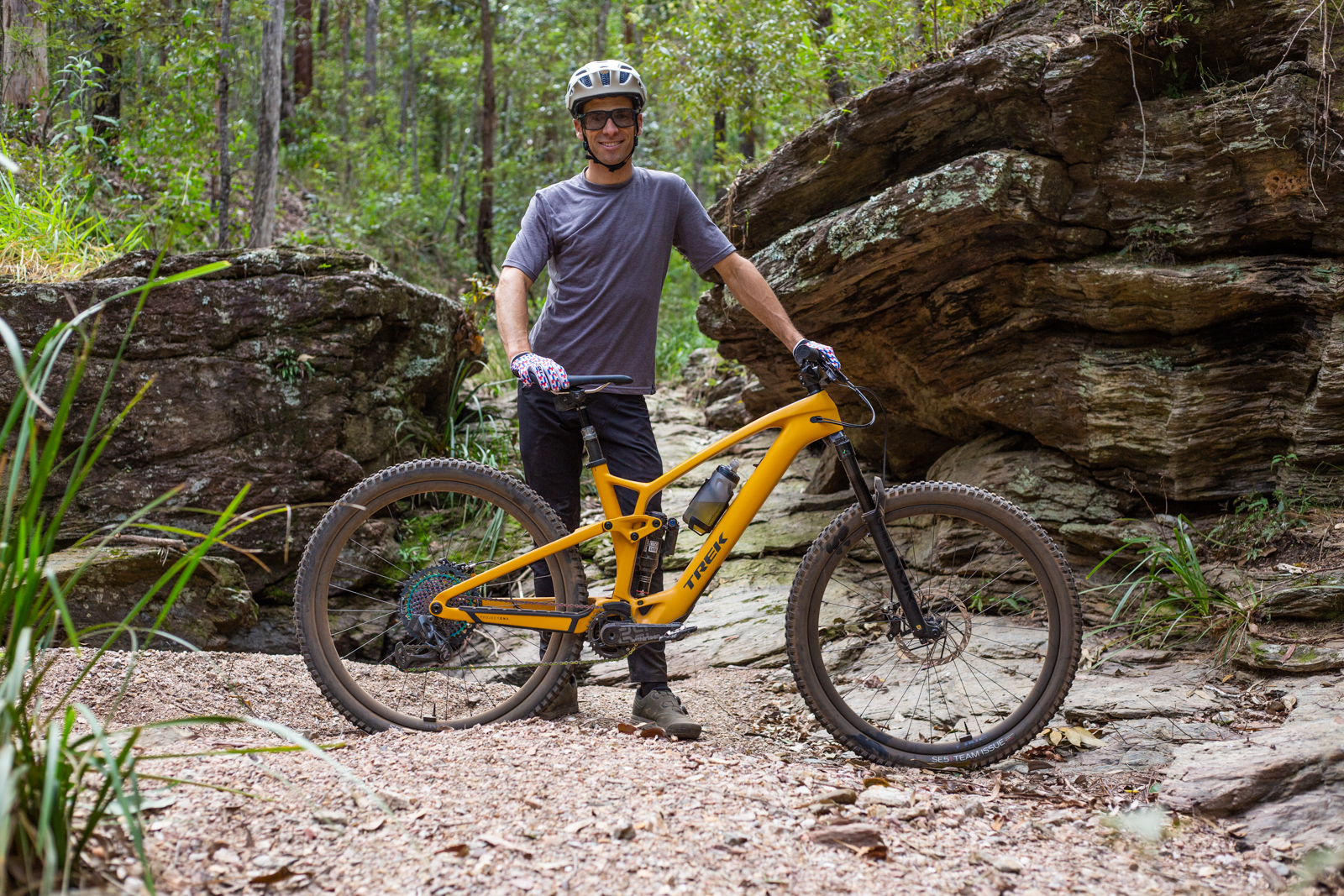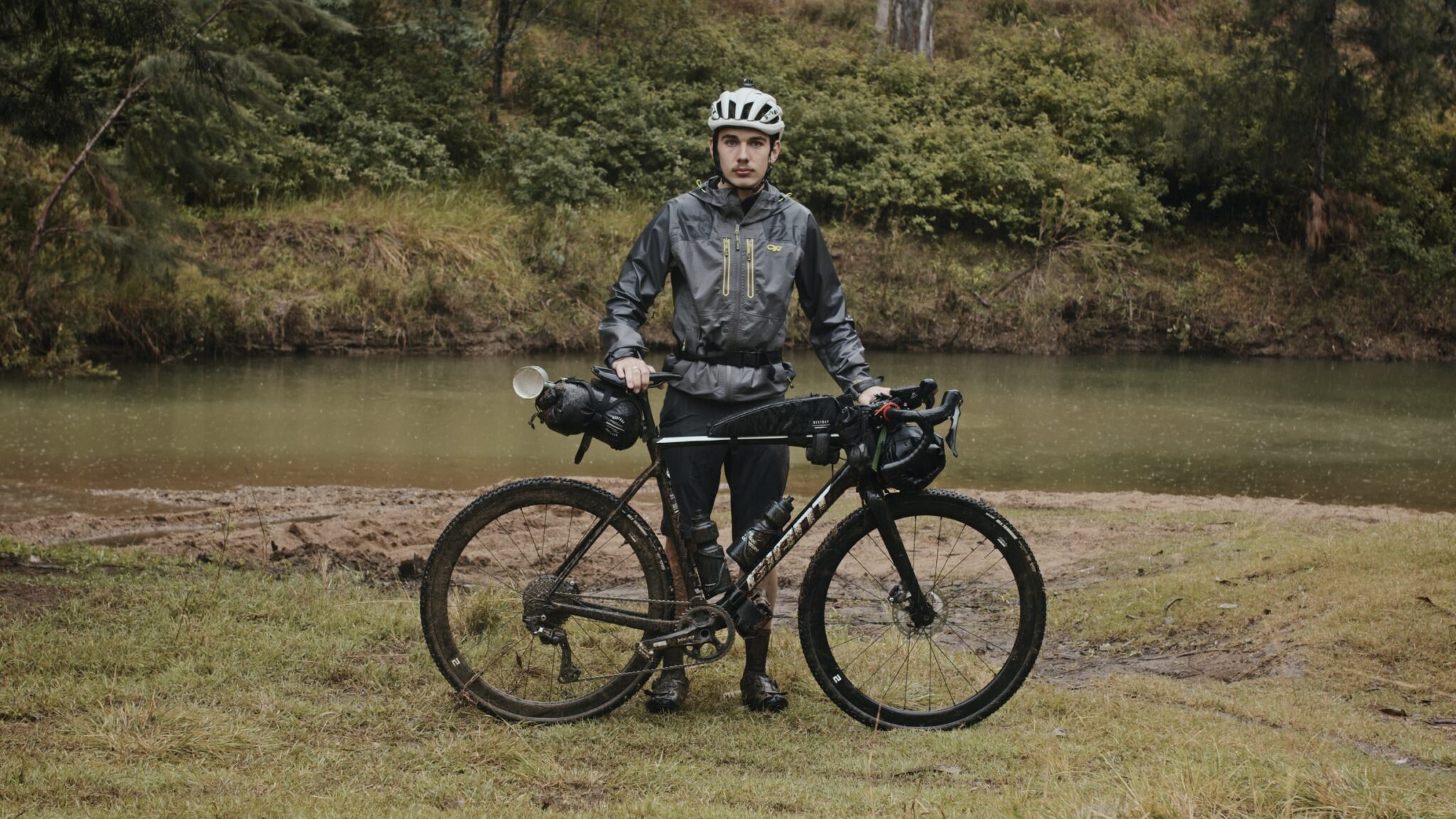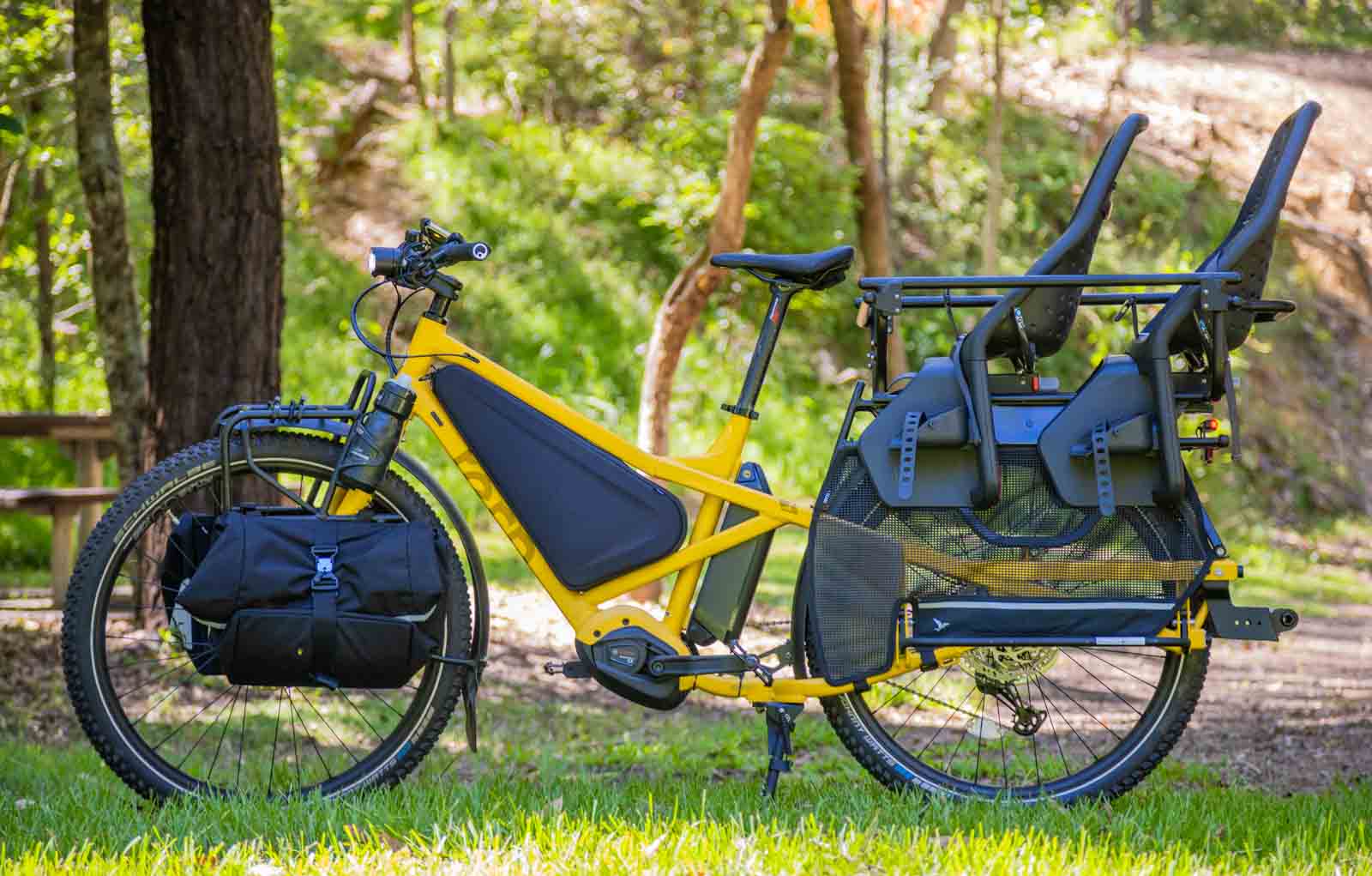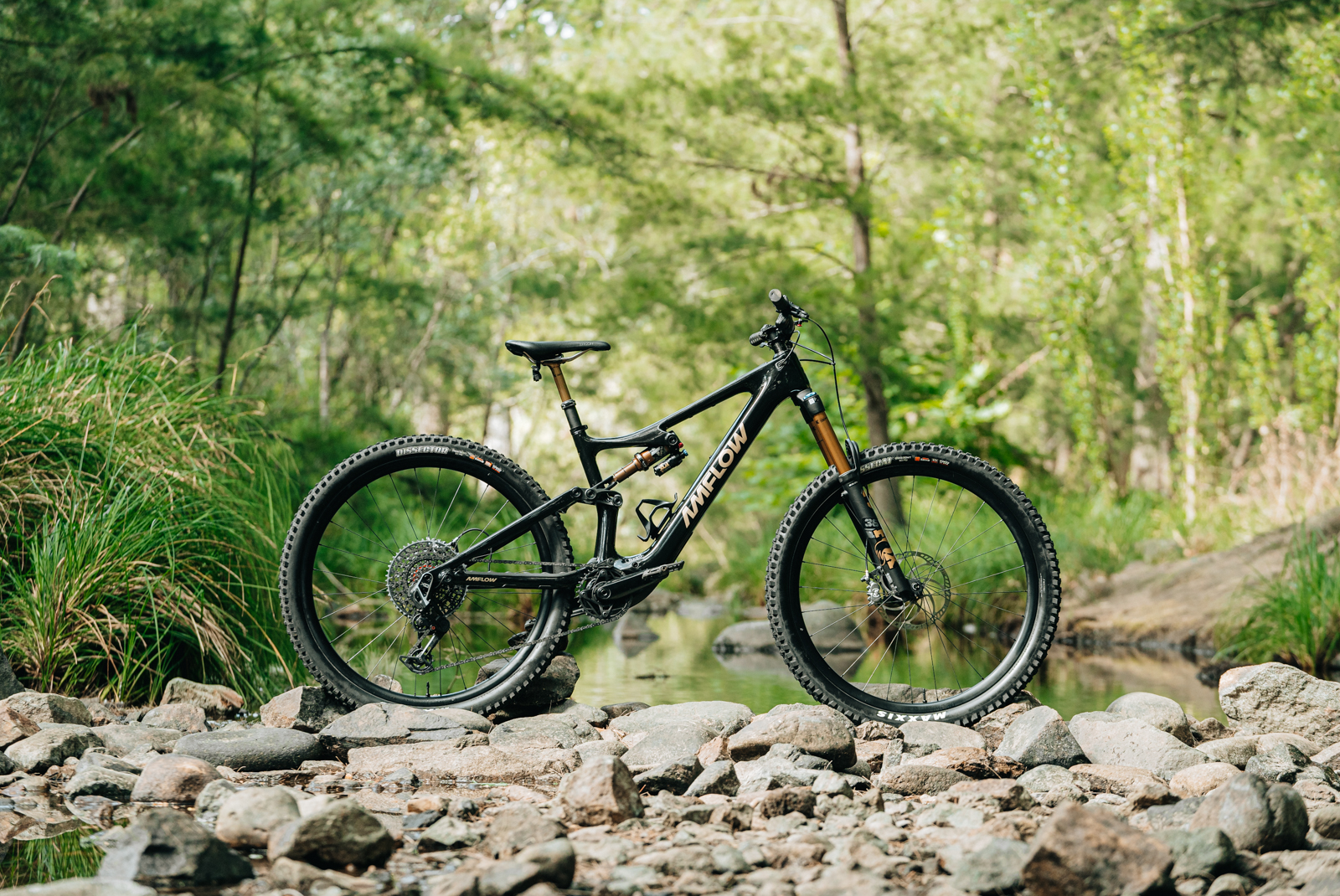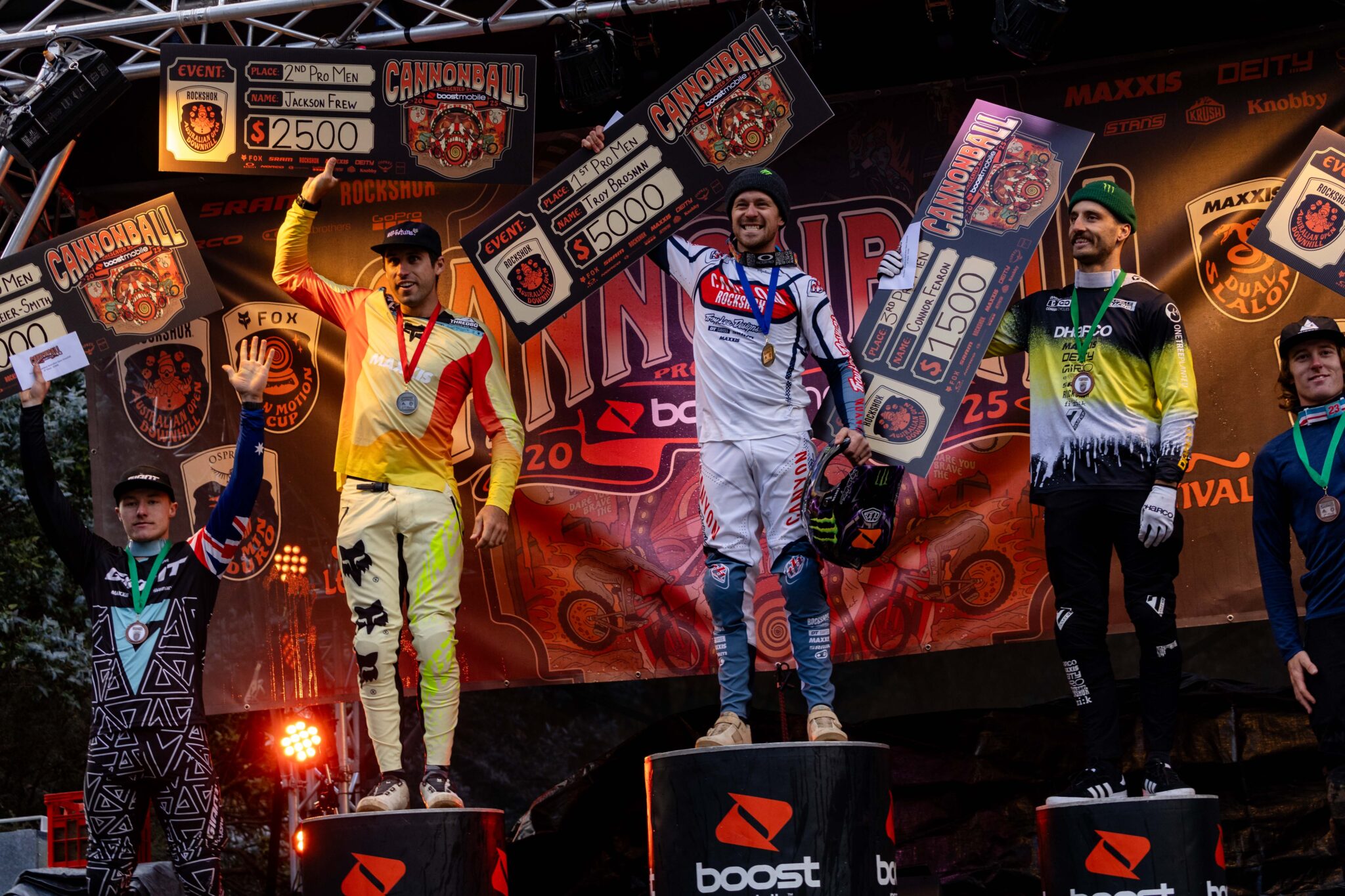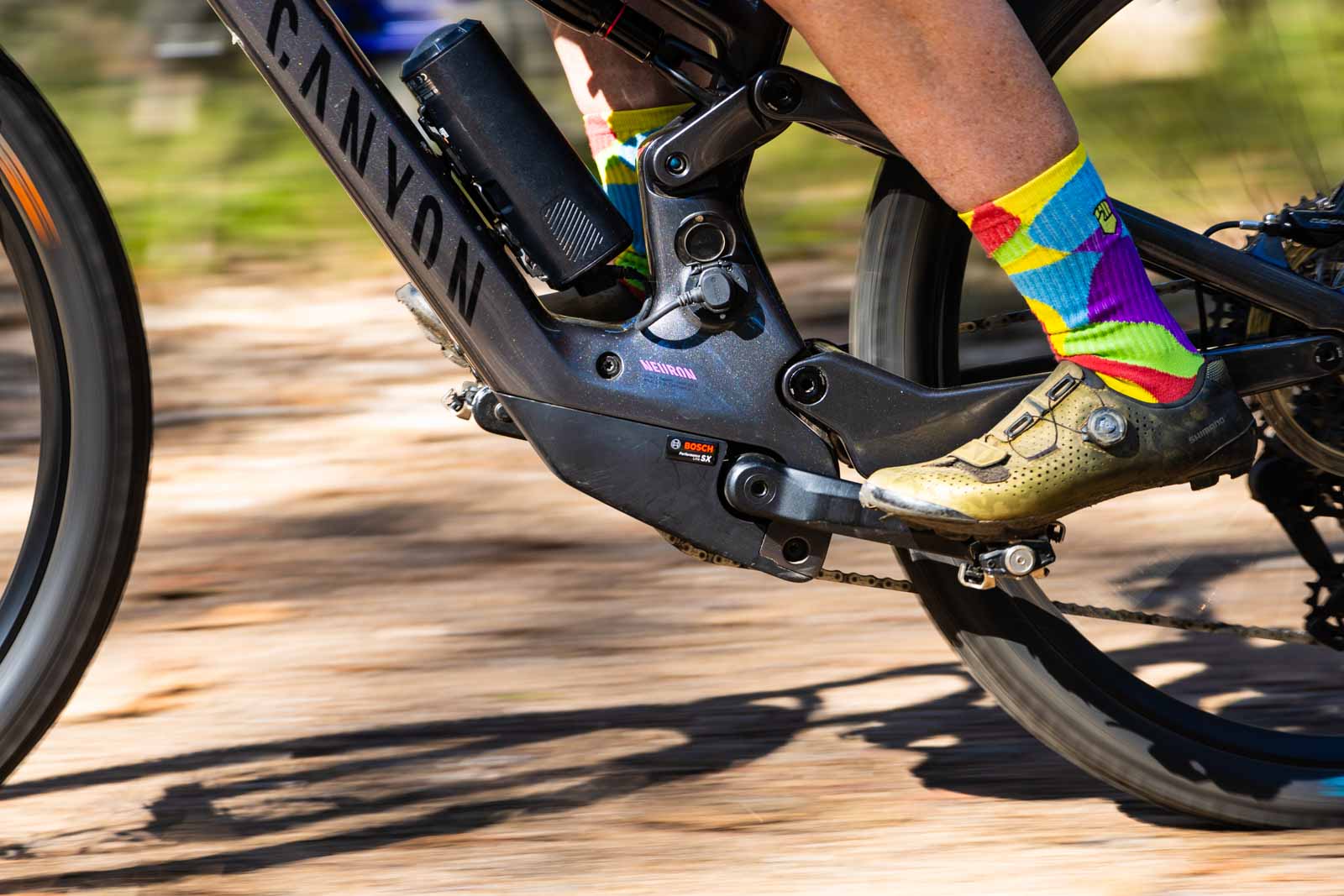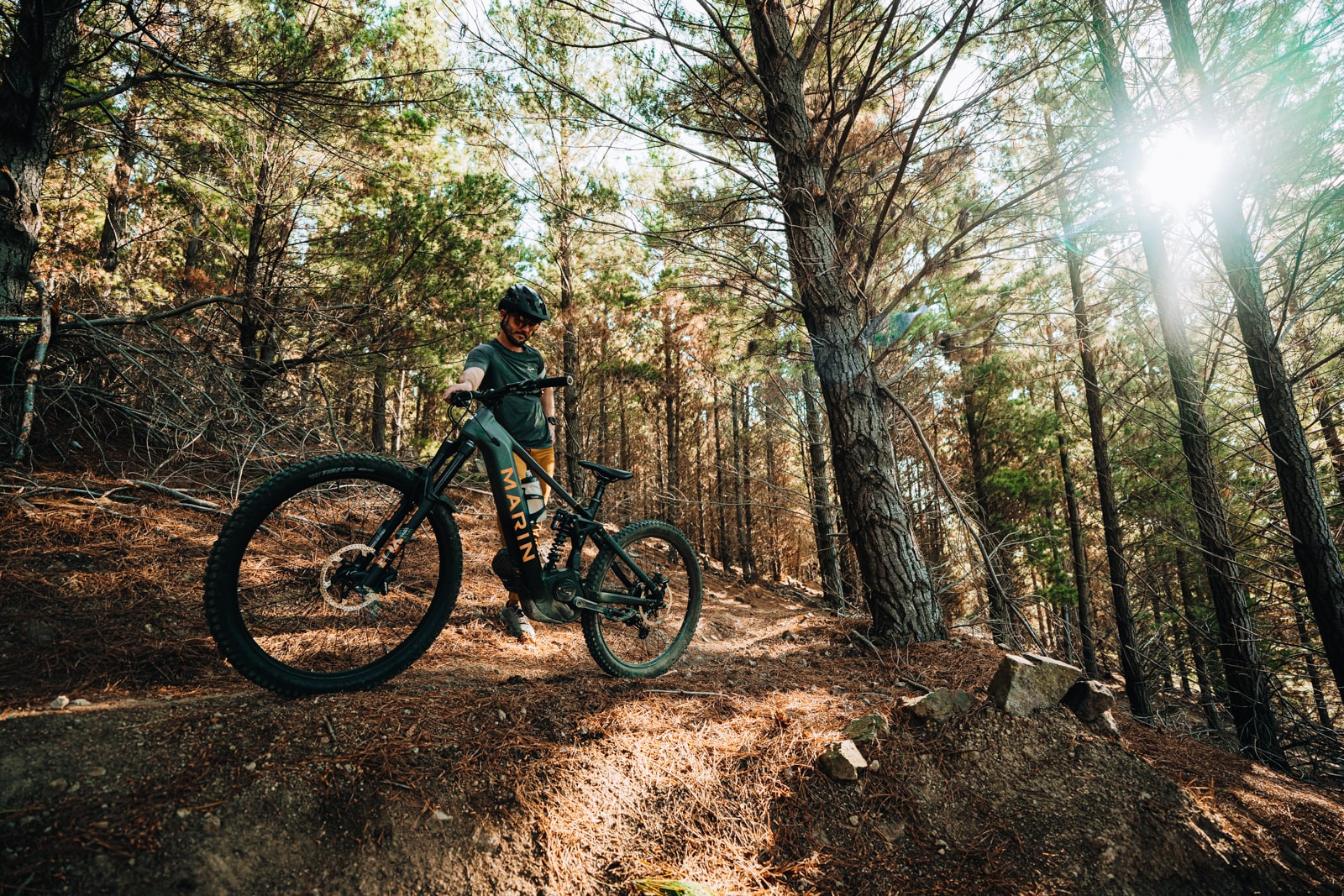TESTED: Trek Fuel EX-e Trail e-bike
The new Trek Fuel EX-e brings mid-power pedal assist to a modern 29er trail bike - and we love it.
Trek's new Fuel EX-e is an ideal addition to not just Trek's range of bikes, but the whole bike and e-bike market. As a mid-power trail e-bike, Trek set out to make the e-bike that any of us would want to ride, sitting in their e-bike range alongside the popular Rail, for the high power, big travel option
All about the Trek Fuel EX-e
The Trek Fuel EX-e has 50Nm of torque with a maximum of 300W assistance, with a 360Wh in-tube battery, all from a brand new TQ-HPR50 motor system from Germany. The motor is near silent, and thanks to how the motor engages, it should be ultra durable thanks to less moving parts.
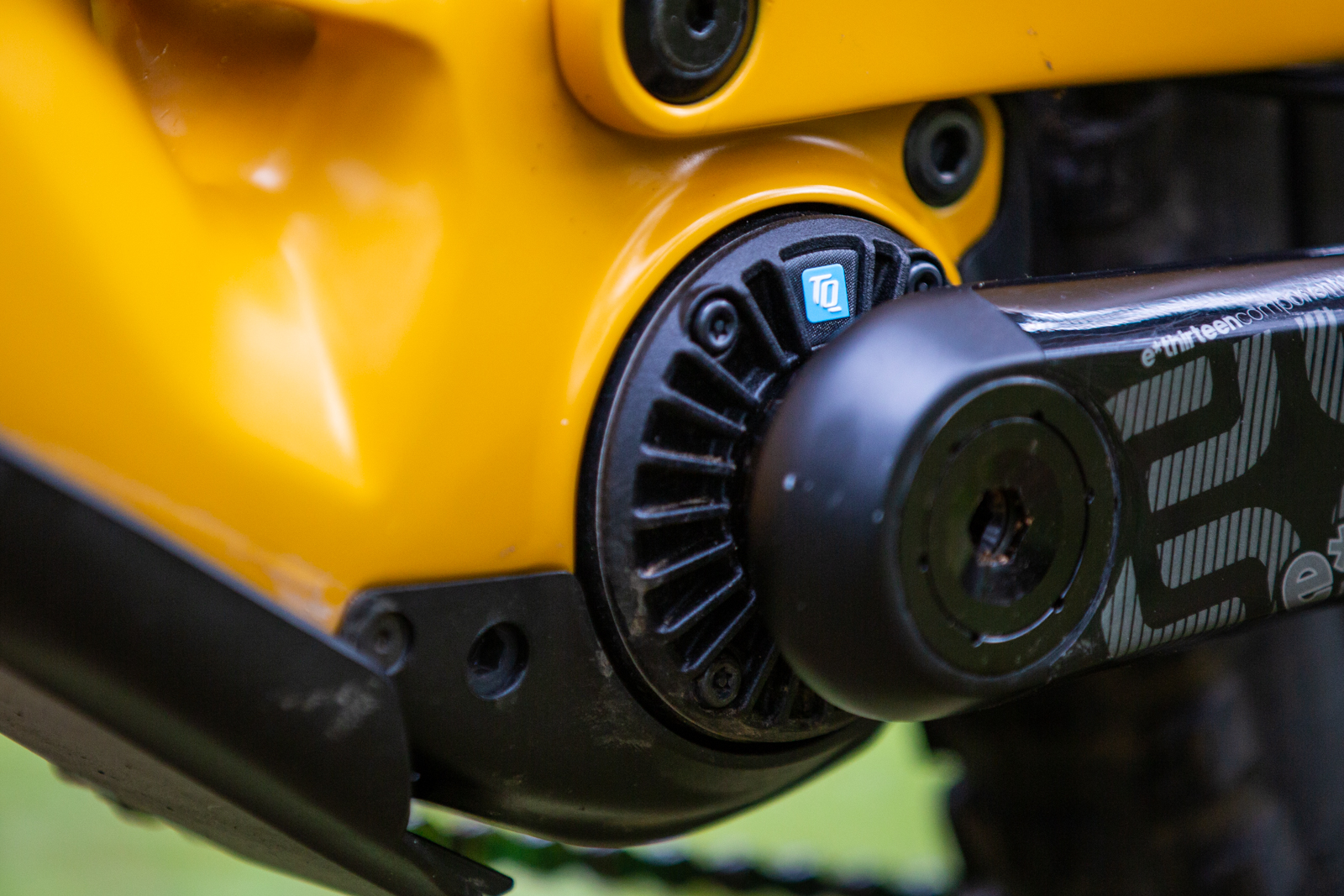
The bike is available in carbon frame 29ers only, with 150mm travel forks and 140mm travel in the back end. Trek state that the bike is mullet approved, and you can pop a 160mm travel fork in there as well.
The frame has a 65 degree head angle with 44mm fork offset, 77 degree seat angle, 485mm reach on our large test model, and 440mm chain stays.

Lots of standard Trek features like the MinoLink geometry adjustment, Active Braking Pivot and internal cable routing are all here. The MinoLink lets you run it a little higher and steeper, or a little lower or slacker. I tested it purely in the low position, with few rocks in the SE QLD area while testing.
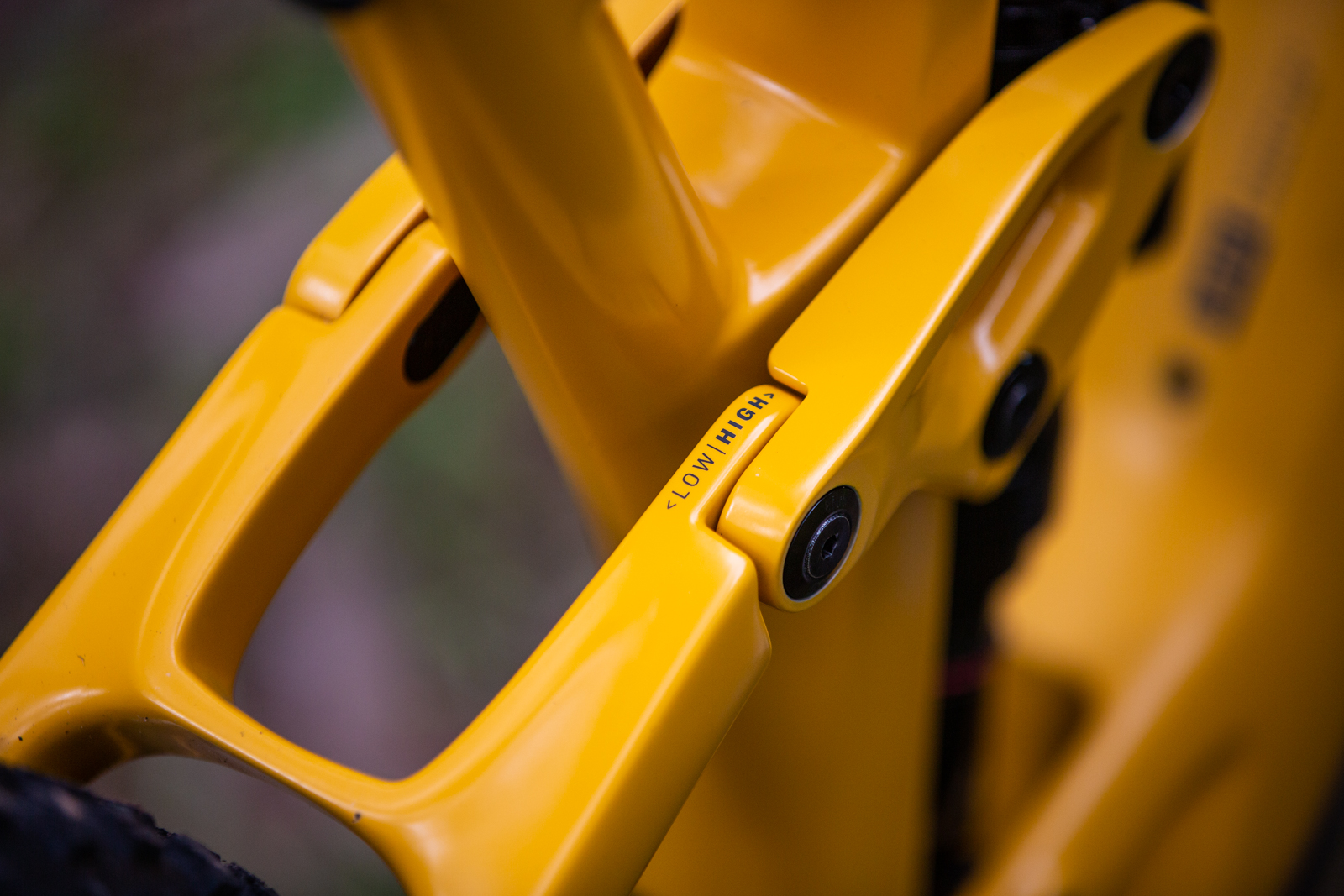
Knock Block is gone to make way for the head unit, which sits neatly into the top tube and shows you what mode you're in, what your likely range is in that mode, plus speed, your power, the bike's power, and battery charge left as a percentage.
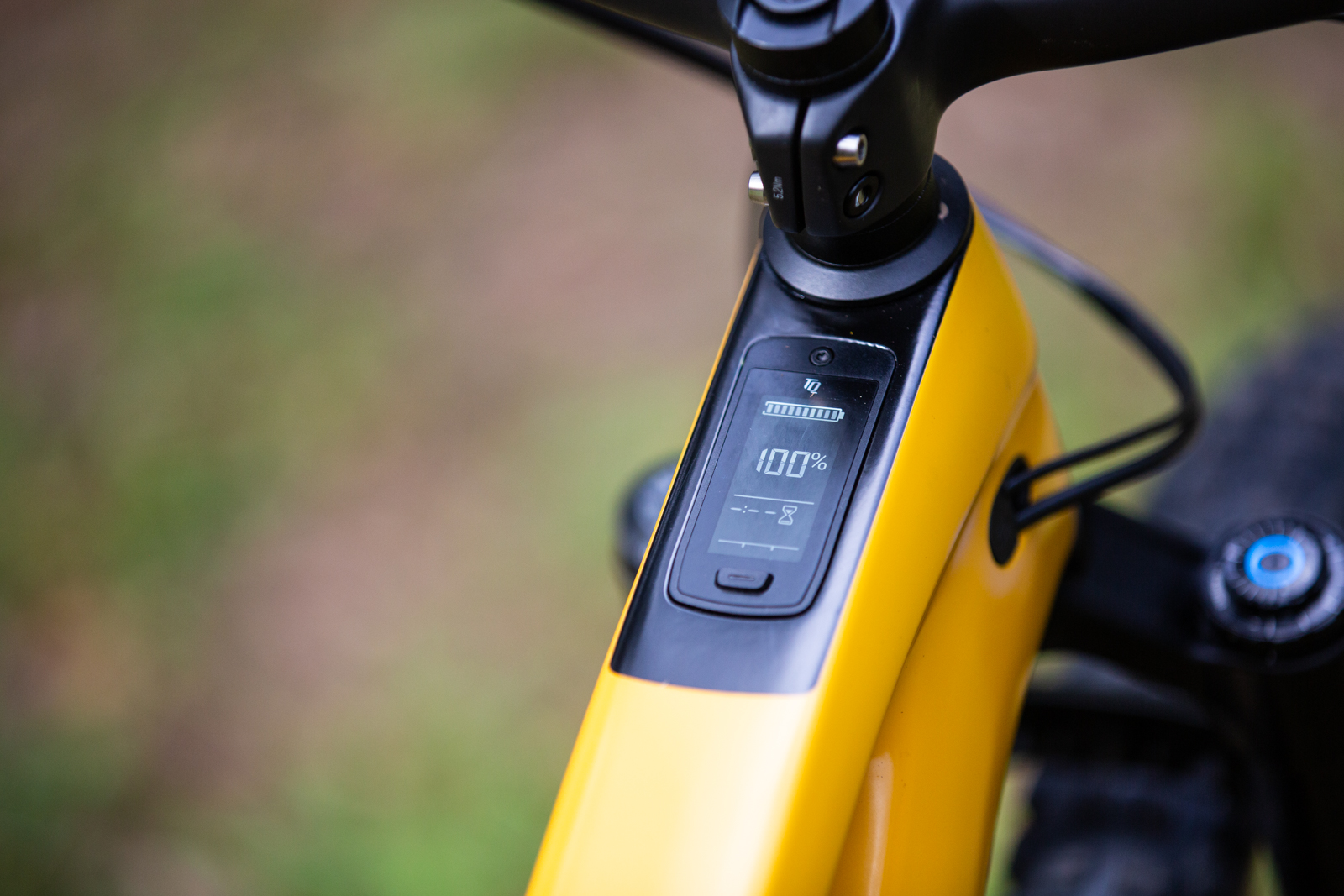
Australian models range from $9499.99 to $12999.99, and come in 4 frame sizes. You can check out the exact specs in our video or at the Trek Australia website.
Our 9.9 AXS model isn't available in Australia, but weighs just 18.47kg in large! It won't be available as a Project One bike, but was the case when we recorded the review in early July. Sorry!
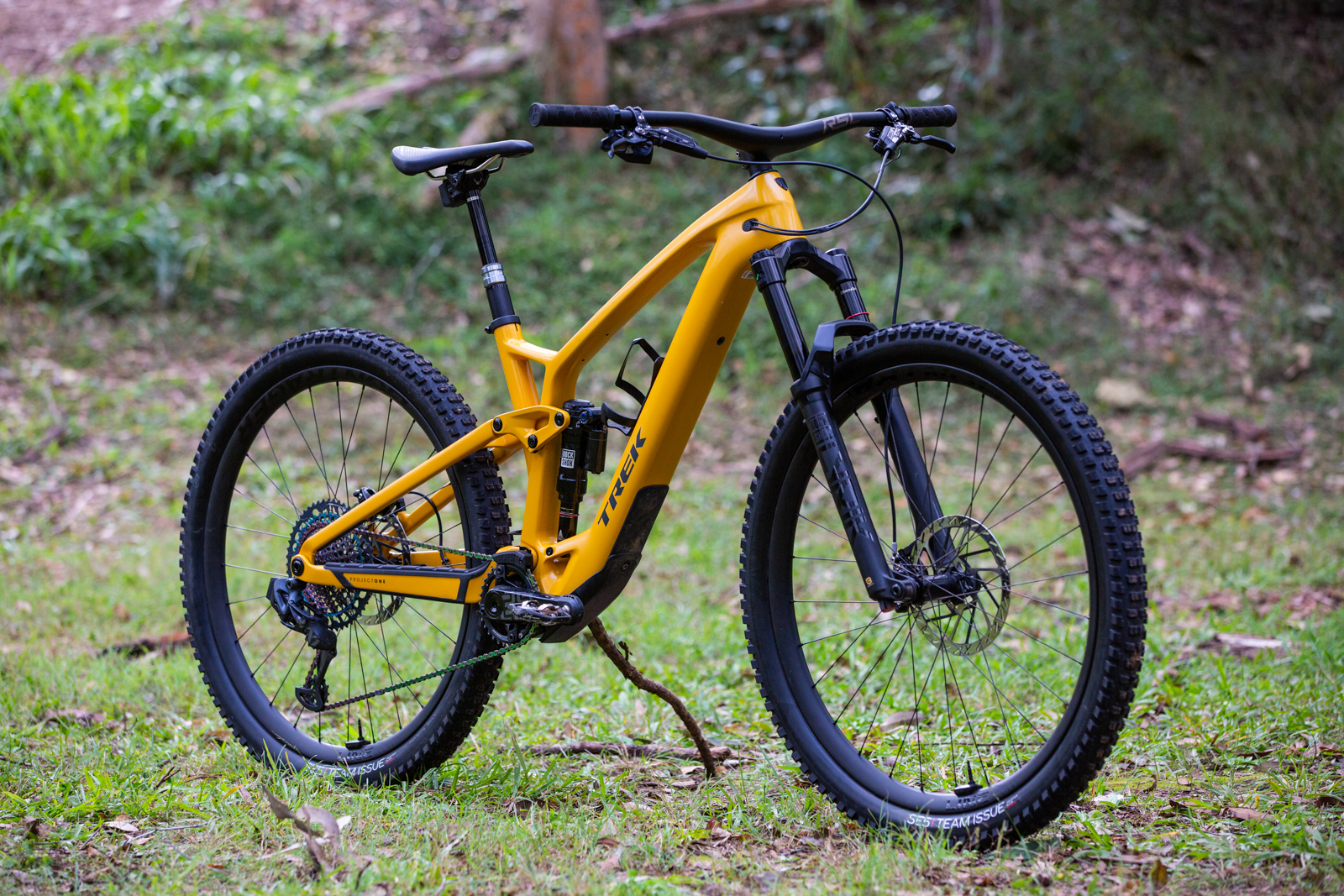
The new TQ-HPR50 e-bike system
This is the first time the bike world has really seen the brand from Bavaria, Germany. This is the land of precision engineering, from cuckoo clocks to fast cars and impressive architecture. TQ roughly translates to Technology in Quality – and they create items for everything from moon rovers to surgical robots! And now e-bike systems as well.
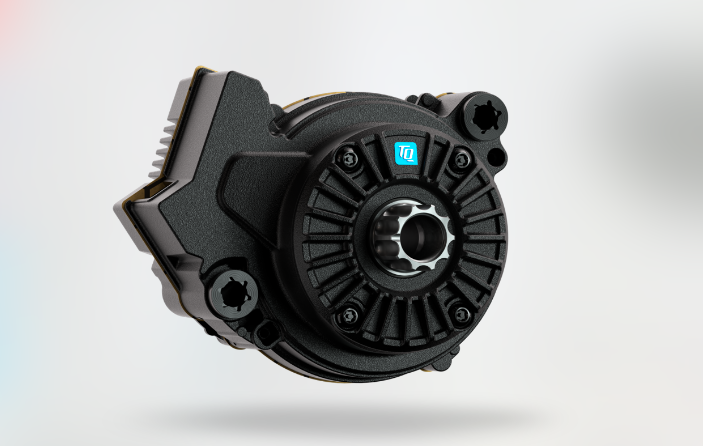
The TQ-HPR50 drive unit, battery, display, remote and sensors are all new and currently exclusive to Trek bikes. The whole system weighs just 3900g, the lightest in class. The HPR stands for the harmonic pin ring transmission. Unlike other e bike motors that use gears or belts, the TQ-HPR50 runs around the bottom bracket spindle, and engages at lots of points all the way around.
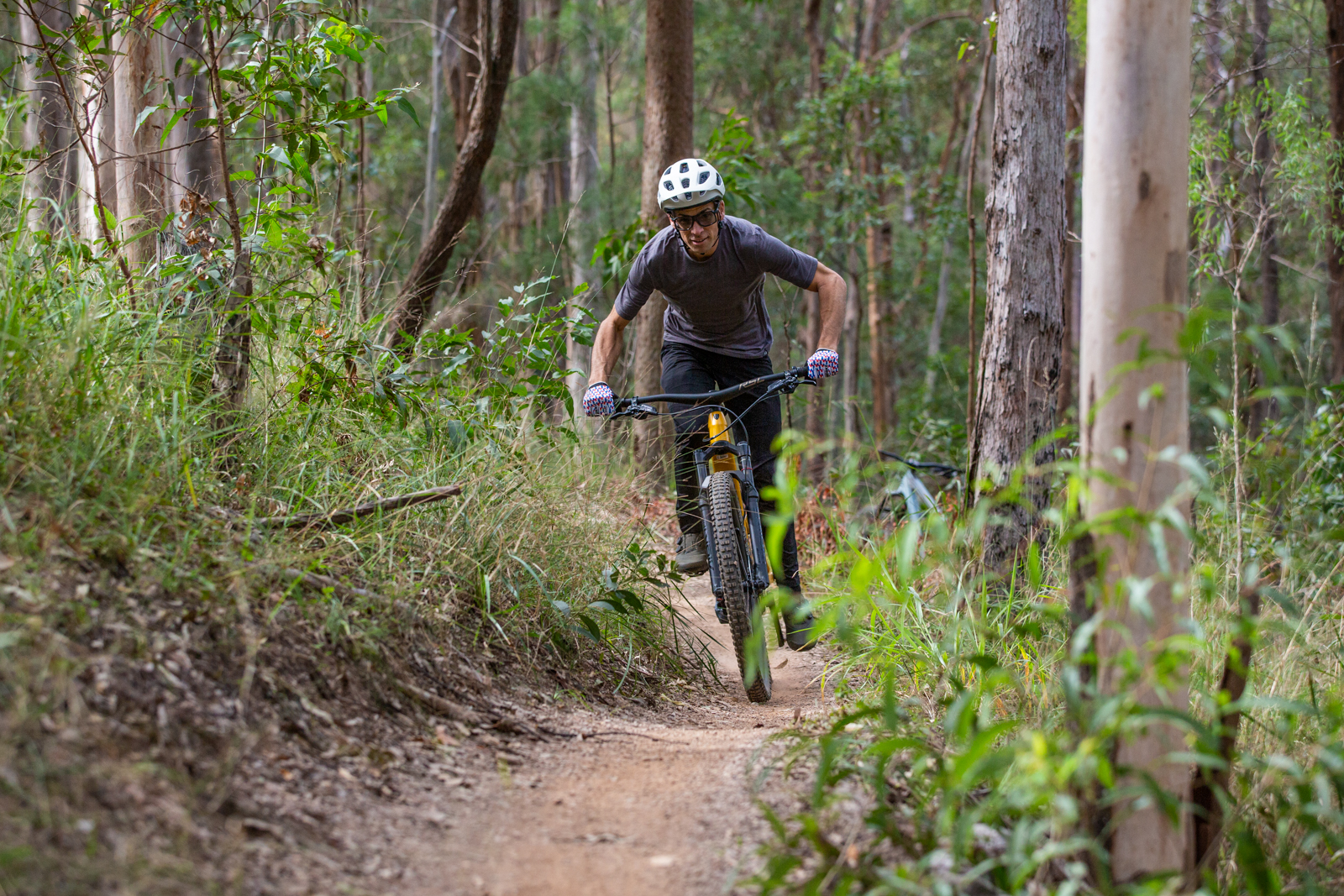
The 1850g motor delivers upto 300w of assistance with a max of 50Nm of torque, and you have 3 customisable modes at your disposal.
The 1830g battery has a 360Wh capacity. TQ say it’s also the densest battery in terms of Wh for size on the market, likely a key factor in keeping the overall size of the frame tubes down. There is also a 900g 160Wh Range extender available, which goes in a bottle holder. You can expect about a 40% increase in range with the range extender – but none were available during this test period.
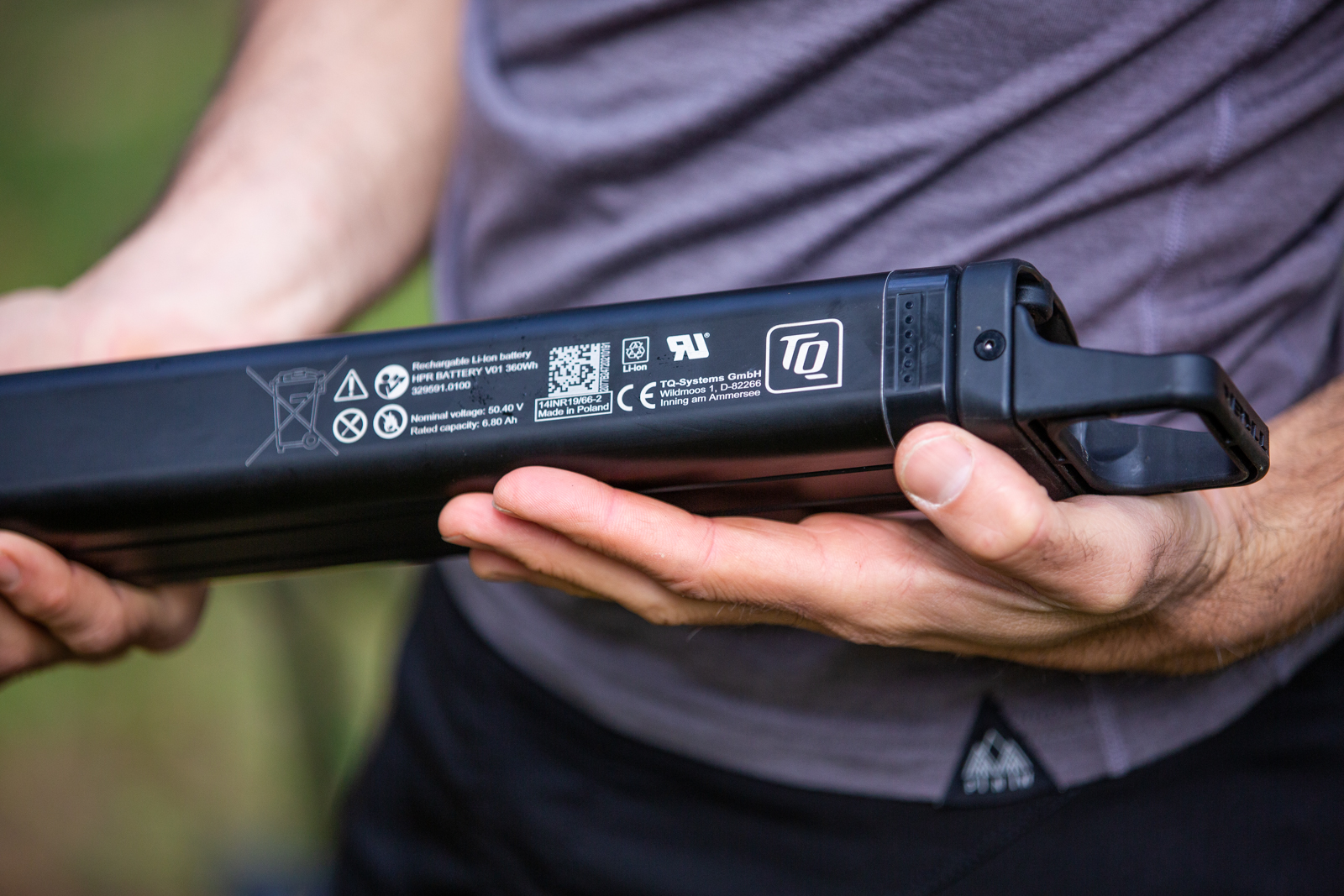
Charge times are about 2hrs for the main battery, and one hour for the range extender. There’s a charge port on the range extender, which means you can charge both batteries at once, although the system prioritises the main battery.
You can ride the bike without the battery, or just the range extender. And at 160Wh you can fly with it in your carry on if you leave the main battery at home. With the bike weight at 16.54kg without the main battery, that’s achievable for taking your eMTB on a plane to a bucket list trail destination.
So about the noise – or lack of. This is the quietest e-bike I have ridden. It still does get a bit of a whir at a typical cadence of around 70rpm, but it really is very quiet. Trek have done testing to show a 0.1 tonality, which measures frequency. But let’s just say it’s really quiet.
The head unit has a 50mm screen sits into the top tube, with an easy to read screen. Each screen shows the battery with a visual indicator for charge left, and a bar along the base with 1, 2 or 3 bars illuminated to show the support mode you’re in. If no bars are there, you need to fire it up. The unit connects to your phone or ANT+ bike computer as well.
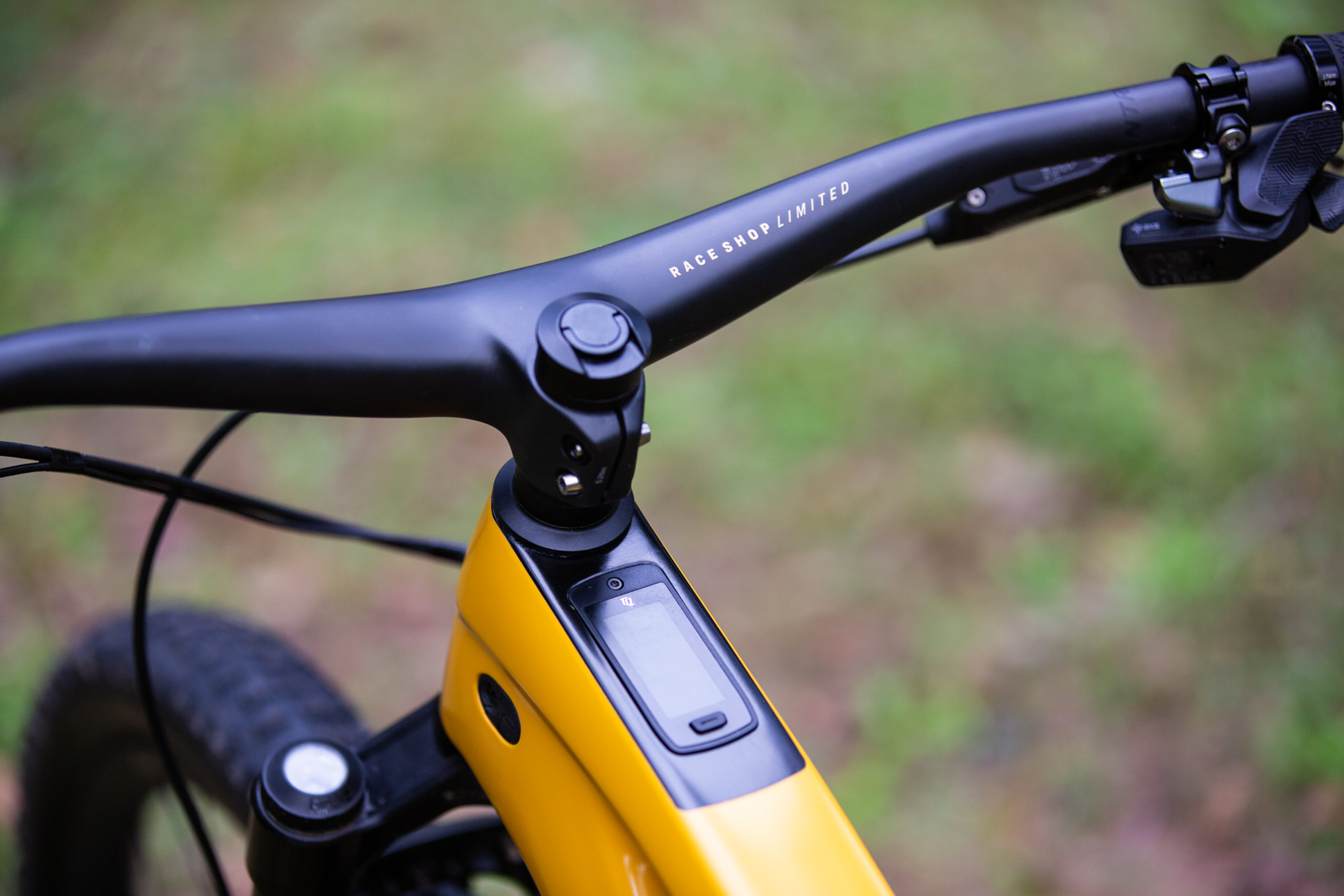
When you get below 10% battery life the system does drop to a max output of 110W assistance. Yes it’s quite noticeable, but it’s better than just burning it all out.
Trek Central App
New gear is nothing without an app to control it! TQ have an app for their motor, but the tuning of modes is rolled into the Trek Central App, with additional ride tracking and setup tools. The app will pair with TyreWiz and AirWiz sensors, so if you’ve upgraded your bike heavily you can use the app as your main command station. Other Bluetooth or ANT+ sensors can also be paired, like a heart rate monitor for fitness tracking.
There’s a pressure calculator that will give you suggested pressure settings, sag and rebound settings for your fork and shock, along with tyre pressure settings, based on your weight. Trek Central will keep a log of your rides, and you can import rides as well as export them to your device. The app can also take care of uploads to ride tracking sites like Strava. There’s the option for navigation via the app, which I suspect will be used on urban bikes that adopt the TQ platform in the future.
For most of us, the motor tuning will be the main function in the Trek Central App. For Eco, Mid and High, you can use a sliding scale to adjust the maximum watts from 0-300, how much assistance it gives you, from 25% to 200%, and what the pedal response is, from gradual to quick.
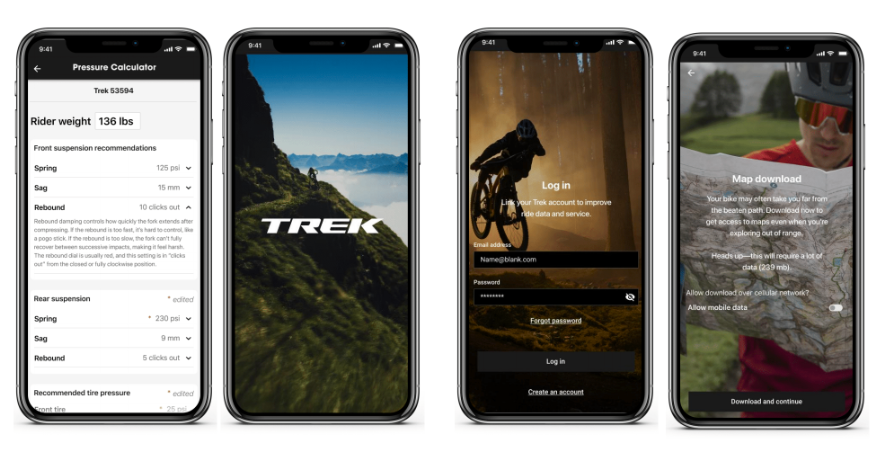
That last one is a little subjective in terms of each end, but this tuning will have the most impact on how you ride. For what it’s worth, the stock settings have been great. And you can reset any changes to stock if you feel like you have messed it up – even when riding.
After any changes, you’ll have an idea on what the range will be like in that mode, although the terrain you’re on will impact that as well. On range, you can see a map on where your current battery life, and support mode, can get you.
Trek Fuel EX-e models in Australia
There are 3 models in the Fuel EX-e range in Australia. All bikes come with 2.5” tyres, 4 pot brakes, 12 speed drivetrains, and strong wheels. They all share same OCLV carbon frame, TQ motor, battery, mode selector and head unit. It’s just the parts, and the price, that changes.
Trek Fuel EX-e 9.5 $9499.99
RockShox Gold 35 RL DebonAir
Deluxe Select+ RT shock
Alex rims with Bontrager hubs
Bontrager XR5 tyres
Shimano Deore 12 speed group set
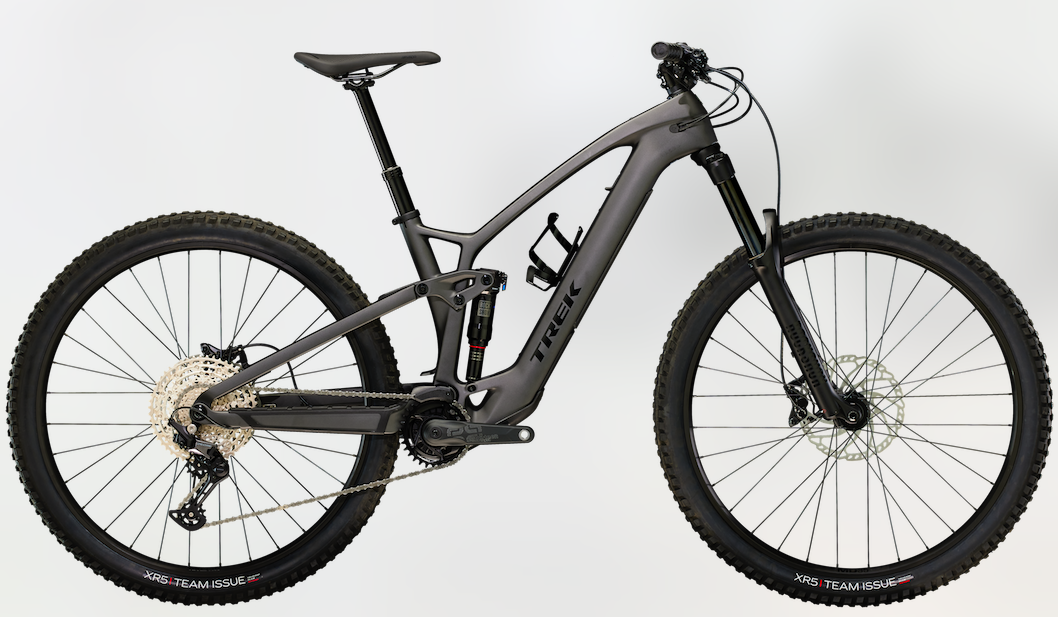
Fuel EX-e 9.7 $10999.99
Fox Rhythm 36 with GRIP damper
Fox Performance Float X, 2 position
Bontrager Line Comp 30 alloy wheels
Bontrager XR5 tyres
Shimano SLX 12-speed group set
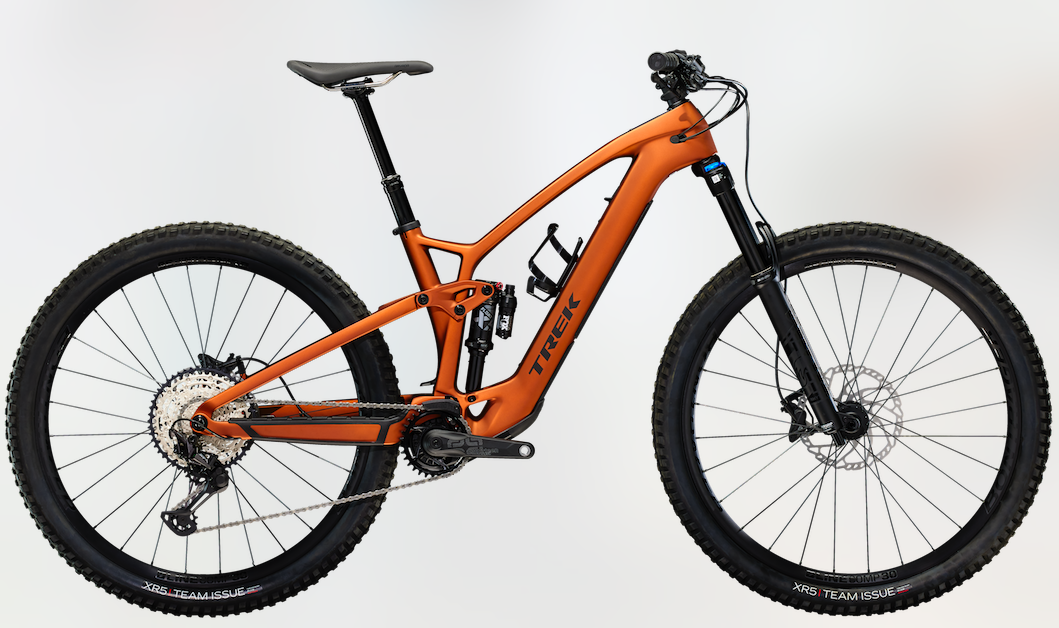
Fuel EX-e 9.8 XT $12999.99
RockShox Lyric Select +
RockShox Super Deluxe Select+ RT
Bontrager Line Elite 30 carbon wheels
Bontrager SE5 tyres
Shimano XT 12 speed group set
OCLV carbon cockpit
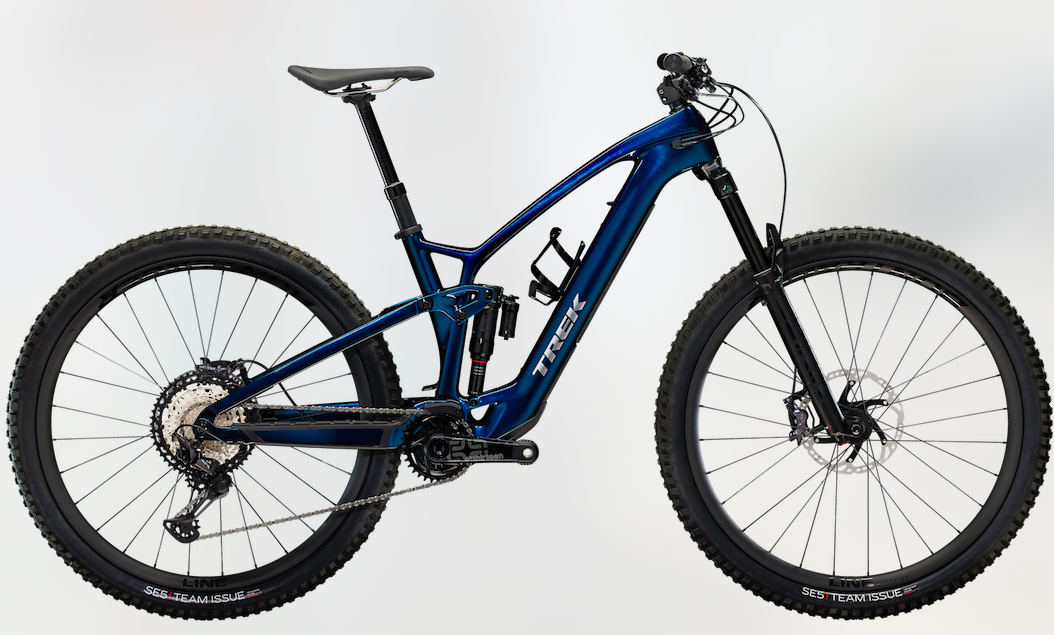
On the trail
E-bikes have progressed at a rapid rate in the past 5 years, and that’s not likely to slow down anytime soon. Trek’s aim was to make an emtb that you want to ride – so to make it versatile and natural feeling.
After spending a few weeks on the Fuel EX-e think we will continue to see more bikes like the this, with 40-60Nm of torque, aimed at letting a slightly smaller and lighter battery keep you out on the bike for longer, with a much more natural feel to the ride.
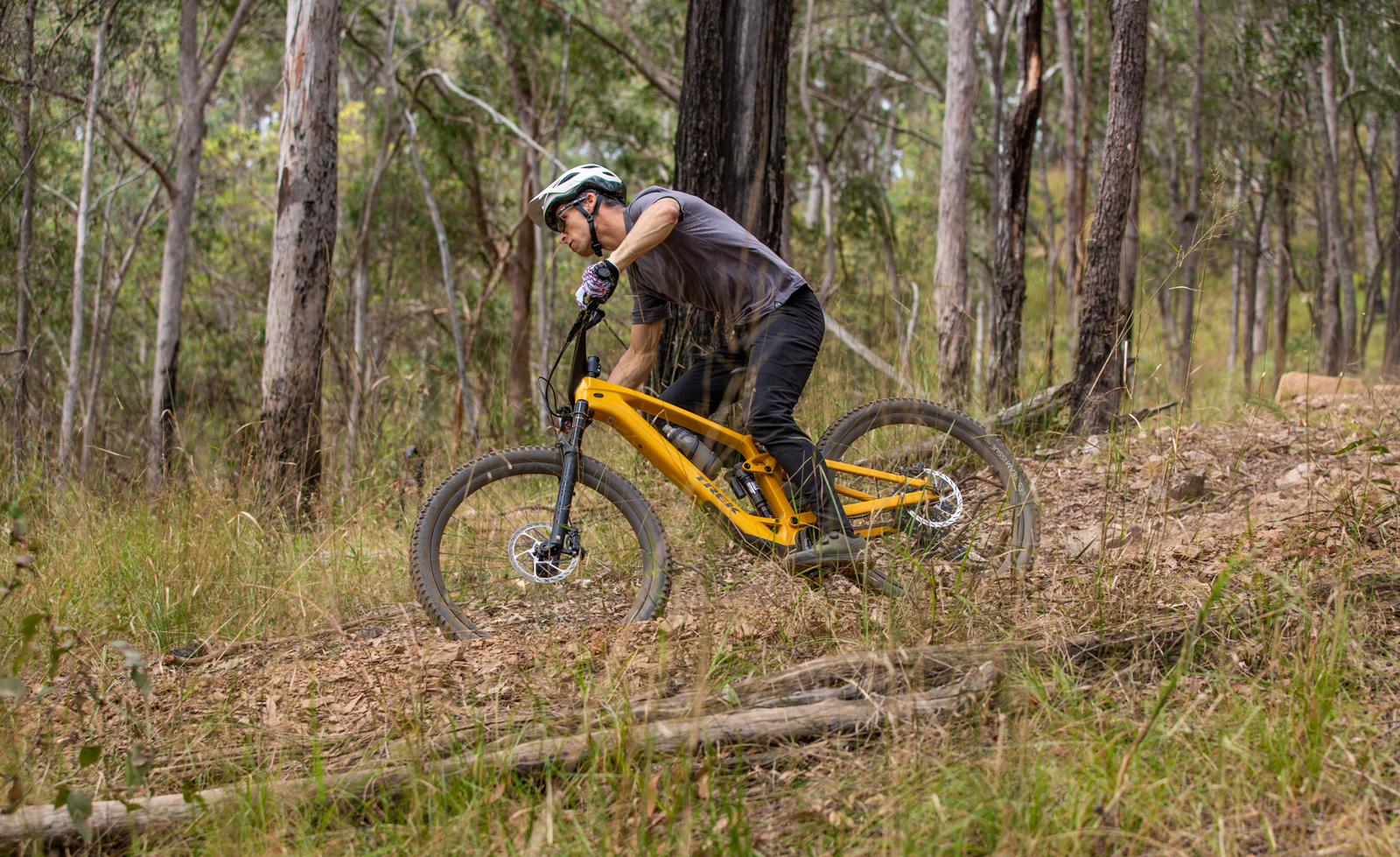
What I have really enjoyed is how the new TQ motor blends into the background of riding the Fuel EX-e. In part, this is due to how quiet it is, and also the programmed settings, making sure it doesn’t surge too much. But it’s also about how Trek can then keep the weight to 18.47kg on this large test bike, while not cutting back on any of the trail-ready components.
There’s a lot to be said about high powered, big battery e bikes. But depending where you ride, it can be tricky to get the most out of them when you’re using the assist – which is going uphill. If you like to tackle technical trails – up, down and along – then a higher torque eMTB that may weight 5 or 6 kg more than the Fuel EX-e can be a little bit of a handful.
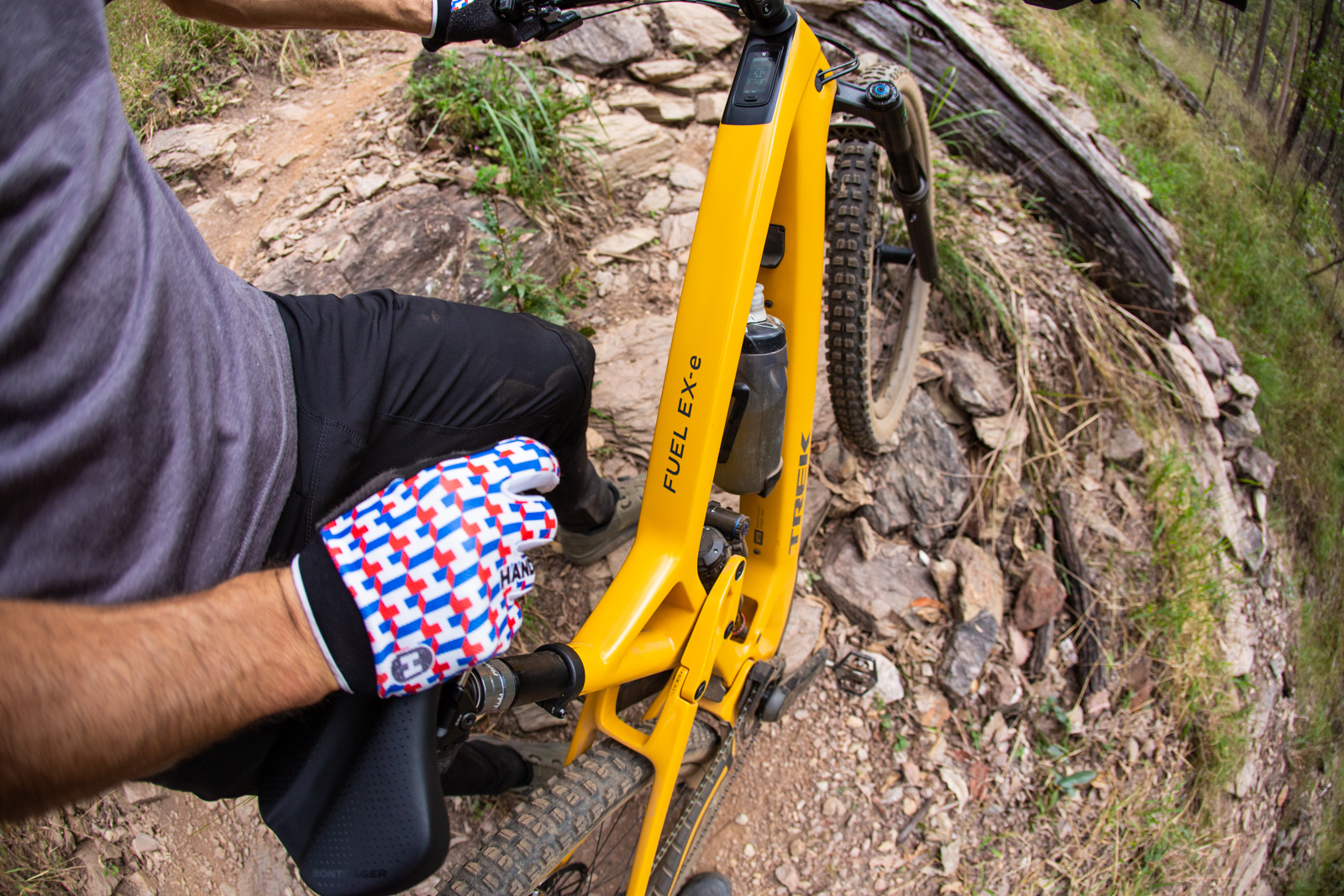
I think this was highlighted on a few trails, even on the first ride I had on the Fuel EX-e. One is called auto alley, at Majura Pines. It traverses the hill, going up and down continually. I was told if you could ride the whole thing without a dab, you were doing well. I was a long way off riding it without a dab, but that was all about me, not the bike I was on. The Fuel EX-e didn’t feel like too much bike to move around with weight shifts, or loading the suspension to loft onto or over a feature – it’s a really dynamic bike to ride. More than other eMTBs I have ridden, it responds to riding input very intuitively.
But that’s not to say it can’t charge some lines with the planted feel that an eMTB gives you.
The Fuel EXe is still a 29er trail bike with a 65 degree head angle, a long reach and a reasonably short rear centre length – so it handles exactly how you would expect a modern trail bike to ride and is truly capable when descending.

In terms of handling, I kept the Fuel EXe in the low setting with the MinoLink. But if I rode in an area with more rock and more singletrack climbs I would certainly use the high setting. Even though the EXe models come with 165mm cranks, a little more clearance is always good, to keep the cranks spinning and the motor on the boil for the assistance on technical features.
For my riding, I liked the middle assistance setting, dropping back to low on gradual climbs and flat trails, and lifting to high on steeper and more technical trails, or on descents that had tight corners where I wanted all the help I could get to get back up to speed after overbraking for corners.
With 300W as a maximum assistance, sure there are times on steep fire trails where it would be nice to have more assistance. But on trails, I never really felt that need.
It’s actually really interesting using the screen on the head unit that shows your power output, and that of the TQ motor. You can see the rate you’re working at, but just how much support you’re getting from the system. I found it was only at the higher levels of support, say 250W and above, that the whir of the TQ motor was noticeable – otherwise it was a really quiet system.
While talking about going up, I was actually really impressed with how the bike pedalled. Yeah, it’s an emtb, but it pedals really well with the shock fully open. Still, it’s nice to have the lockout there, and I did use it when riding to and from the trail. And, that’s something I never really enjoy much on an eMTB due to the assistance cutting out at 25kmh. But the Fuel EX-e rides really well without support, that is was less of an issue than on other bikes. It certainly didn’t feel like being in mud. I even did a climb at my local trails with the bike switched off. It was ok, it just felt like I was riding a much heavier bike than I thought – but there was none of the drag that some systems have.
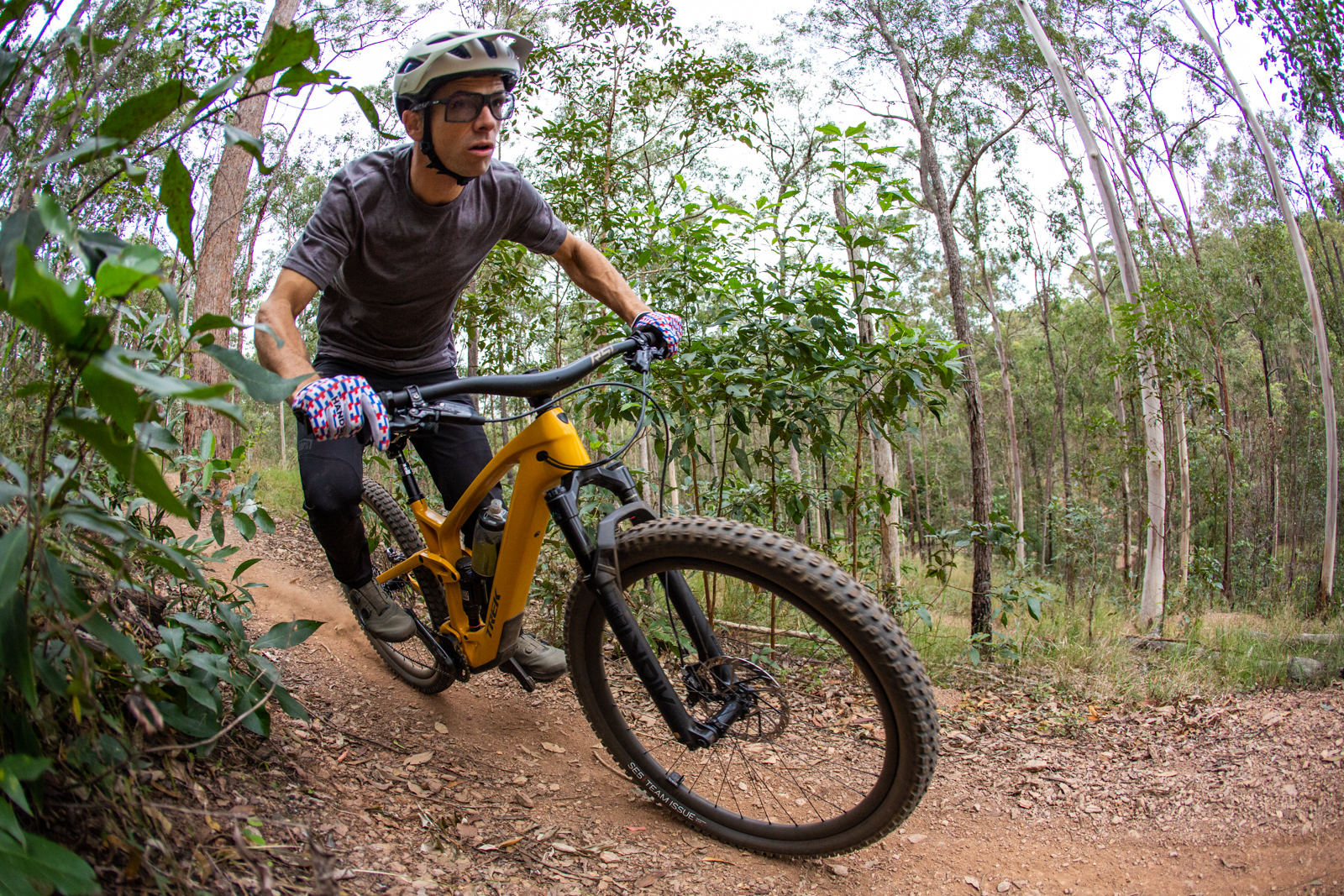
As for range, I was comfortably getting rides of around two and a half to three hours in, with 1000-1500m of climbing with anywhere from 10-30% charge left, and I used the support quite generously. Trek claim 2-5 hours, as there are so many variables that will make an impact.
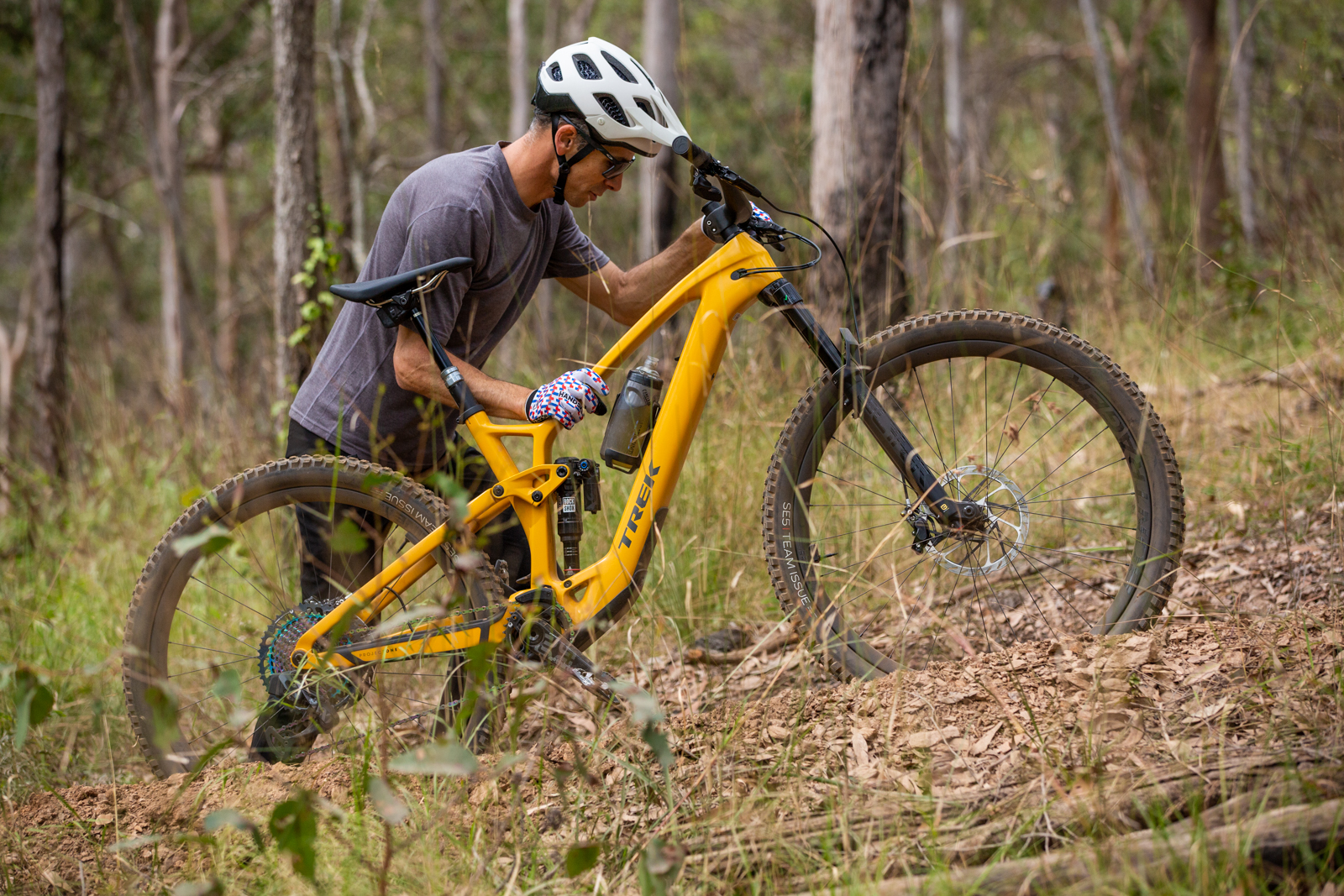
Our take
With some e bikes going longer travel, with bigger batteries, more torque and higher weight, the Trek Fuel EX-e unsurprisingly does what the Fuel EX does. It walks a balance of being burly enough for a lot of trails, and light enough for a lot of riding.
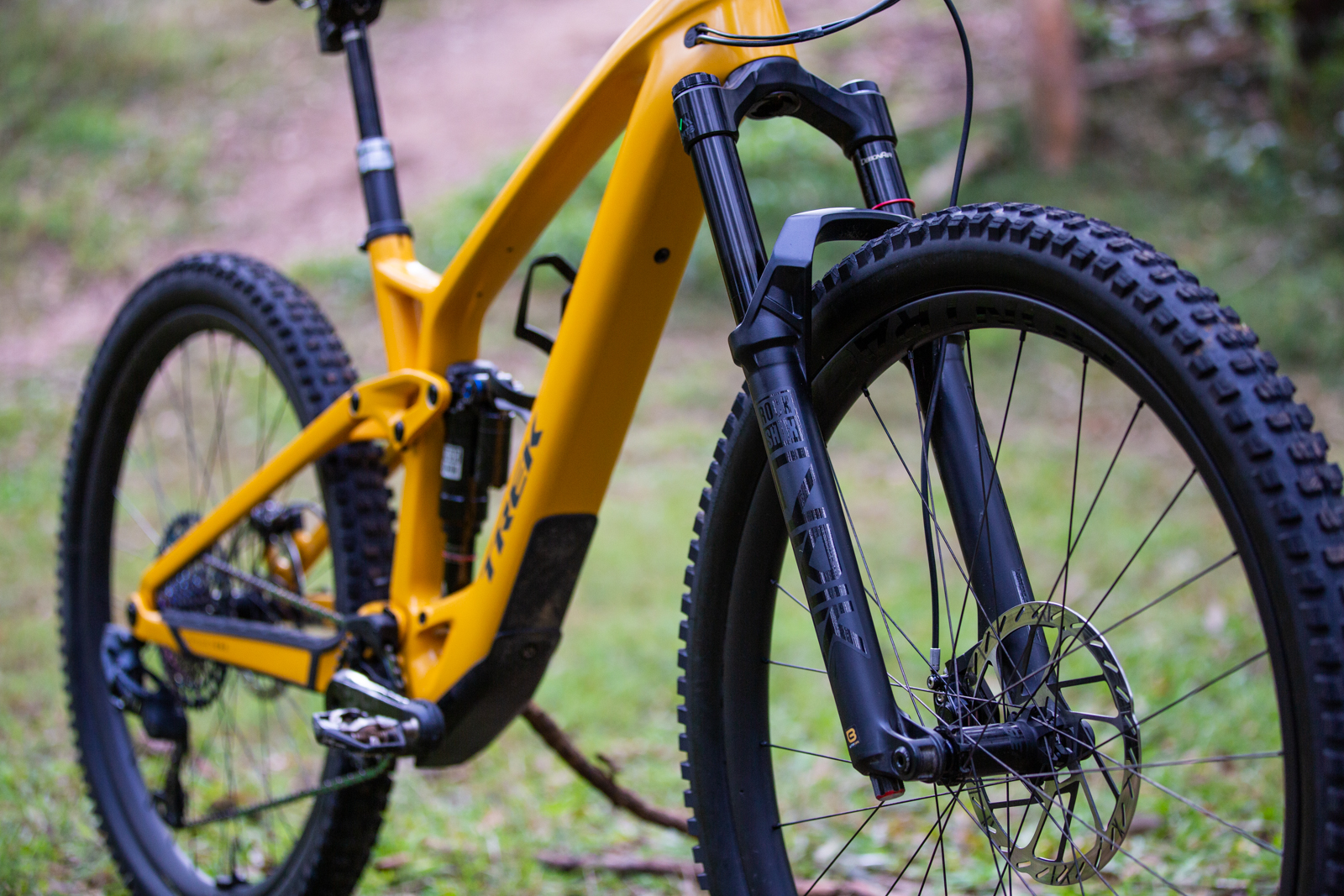
I’m not going to say this is the one e-bike to rule them all. But it really is a great all-rounder. If your aim is self shuttling, then it’s going to do that with no worries. If your aim is getting more descending time in for your time on the bike – you’ll get that as well. If you want a bike that rides in a pretty similar fashion to a regular trail bike, you’ll probably have that as well.
Chasing more eMTB reviews? Try these:
Specialized Levo Comp Alloy
Trek Rail 7
Trek Rail 9.8 XT
Specialized Levo SL Expert
Norco Sight VLT C2
Pivot Shuttle Team XTR
Specialized Turbo Levo Expert
Orbea Wild FS M10
While I didn’t get the option to use the range extender, with this on hand the Fuel EX-e really suits someone who wants a bike to get trail time in before or after work during the week, to then have a big day on the trails on the weekend. It’s fun to ride, with great feedback to pedal input, but perhaps more importantly, great feedback to getting out and riding it like you would any trail bike. I think Trek have done an excellent job making an eMTB that looks like a regular bike, and rides a lot like one as well. Better yet, the pricing for a full-carbon frame with top notch motor and battery system is surprisingly good – in the realms of eMTB pricing.
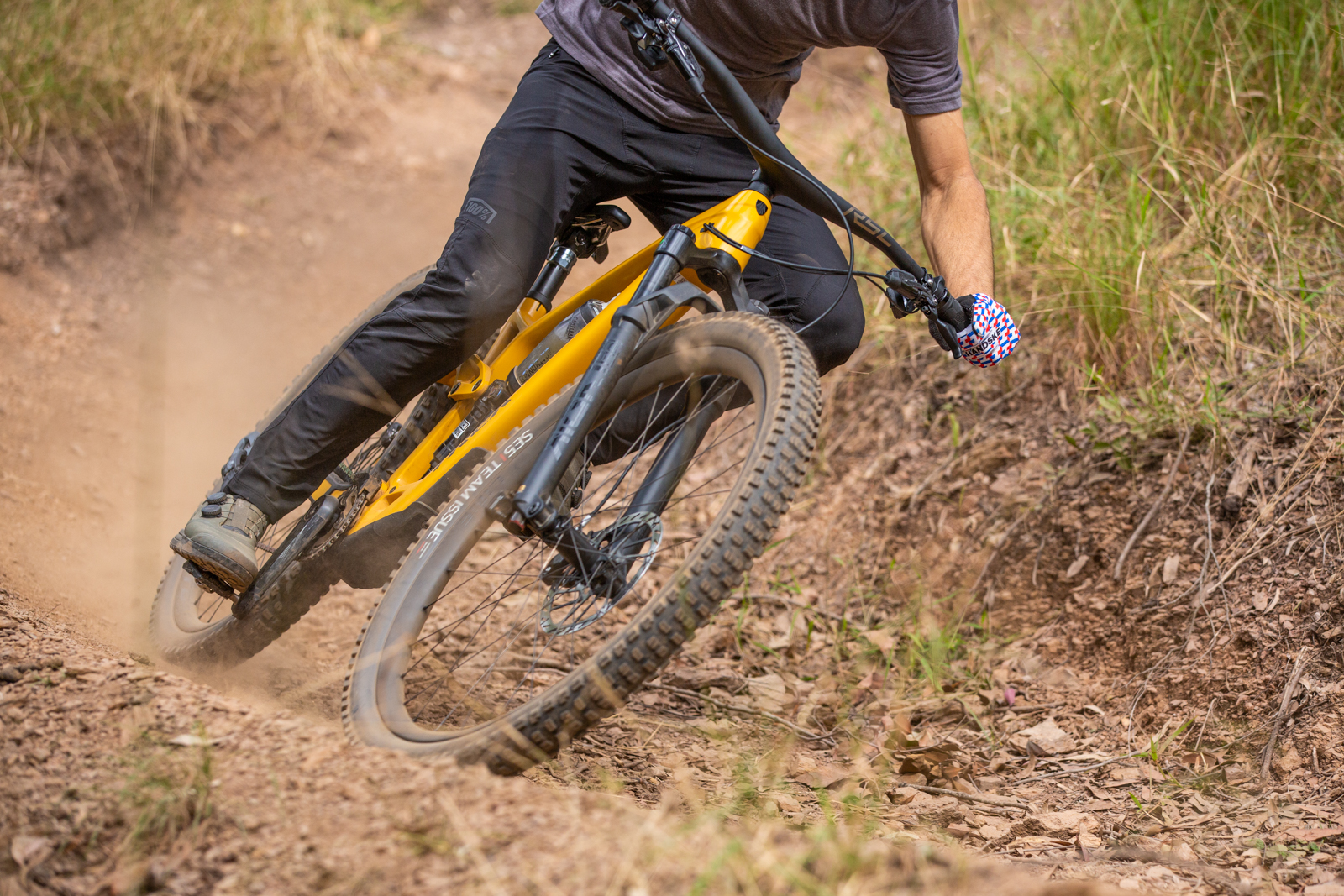
I think the Fuel EX-e blurs the lines between going for a ride and going for an e bike ride. It’s a natural feeling ride and an excellent player to the growing mid-power eMTB market. I’d recommend visiting your local Trek dealer to find out about availability.
All photos and video by Gerard Lagana
